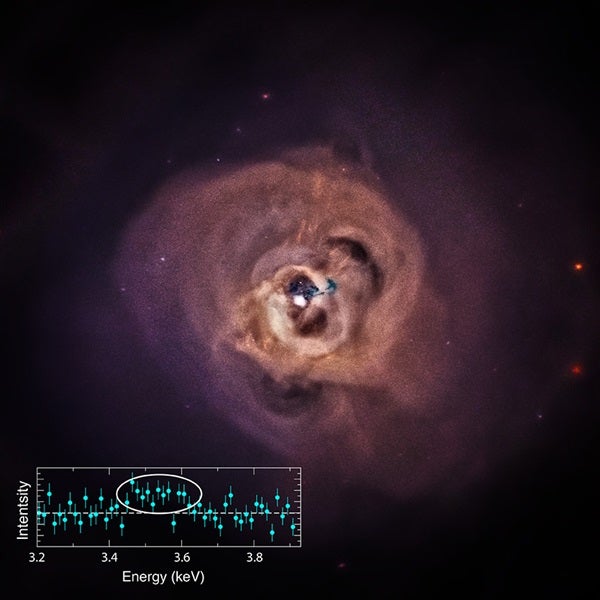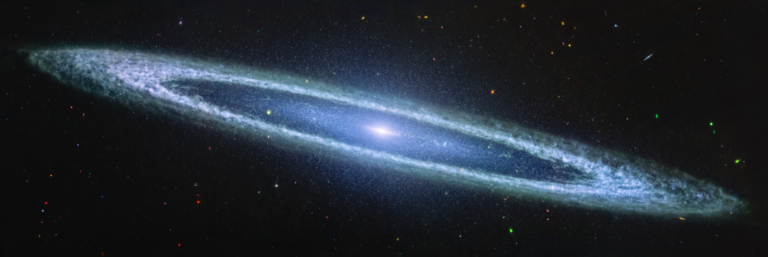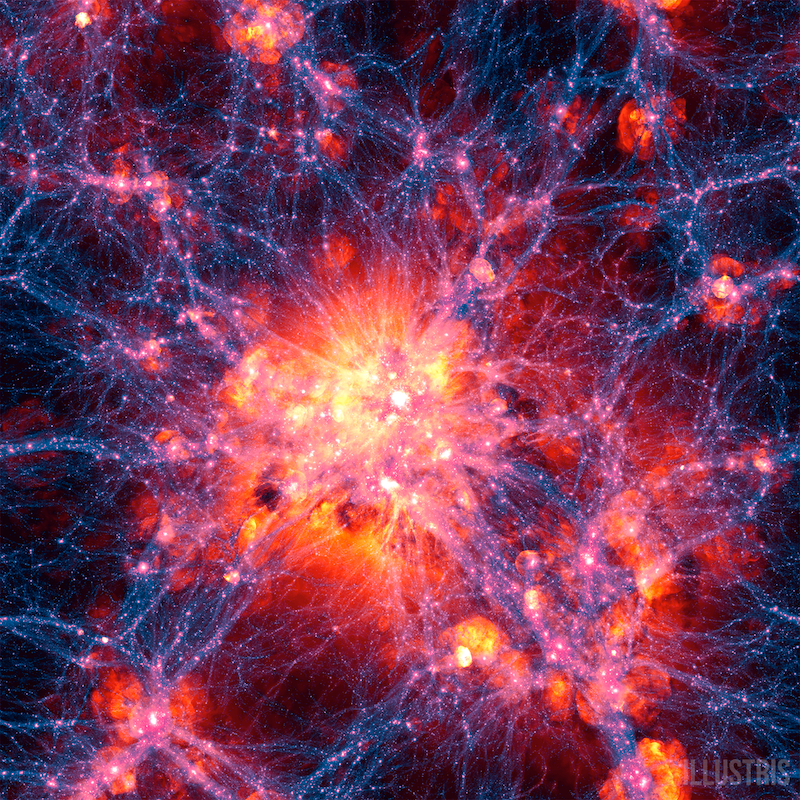While holding exciting potential, these results must be confirmed with additional data to rule out other explanations and determine whether it is plausible that dark matter has been observed.
Astronomers think dark matter constitutes 85 percent of the matter in the universe but does not emit or absorb light like “normal” matter such as the protons, neutrons, and electrons that make up the familiar elements observed in planets, stars, and galaxies. Because of this, scientists must use indirect methods to search for clues about dark matter.
The latest results from Chandra and XMM-Newton consist of an unidentified X-ray emission line, that is, a spike of intensity at a very specific wavelength of X-ray light. Astronomers detected this emission line in the Perseus galaxy cluster using both Chandra and XMM-Newton. They also found the line in a combined study of 73 other galaxy clusters with XMM-Newton.
“We know that the dark matter explanation is a long shot, but the payoff would be huge if we’re right,” said Esra Bulbul of the Harvard-Smithsonian Center for Astrophysics (CfA) in Cambridge, Massachusetts. “So we’re going to keep testing this interpretation and see where it takes us.”
The authors suggest this emission line could be a signature from the decay of a “sterile neutrino.” Sterile neutrinos are a hypothetical type of neutrino that is predicted to interact with normal matter only via gravity. Some scientists have proposed that sterile neutrinos may at least partially explain dark matter.
“We have a lot of work to do before we can claim, with any confidence, that we’ve found sterile neutrinos,” said Maxim Markevitch from NASA’s Goddard Space Flight Center in Greenbelt, Maryland. “But just the possibility of finding them has us very excited.”
One source of uncertainty is that the detection of this emission line is pushing the capabilities of the two observatories in terms of sensitivity. Also, there may be explanations other than sterile neutrinos if this X-ray emission line is deemed to be real. There are ways that normal matter in the cluster could have produced the line, although the team’s analysis suggested that all of these would involve unlikely changes to our understanding of physical conditions in the galaxy cluster or the details of the atomic physics of extremely hot gases.
The authors note that even if the sterile neutrino interpretation is correct, their detection does not necessarily imply that all of dark matter is composed of these particles.
“Our next step is to combine data from Chandra and JAXA’s Suzaku mission for a large number of galaxy clusters to see if we find the same X-ray signal,” said Adam Foster, also of CfA. “There are lots of ideas out there about what these data could represent. We may not know for certain until Astro-H launches with a new type of X-ray detector that will be able to measure the line with more precision than currently possible.”










